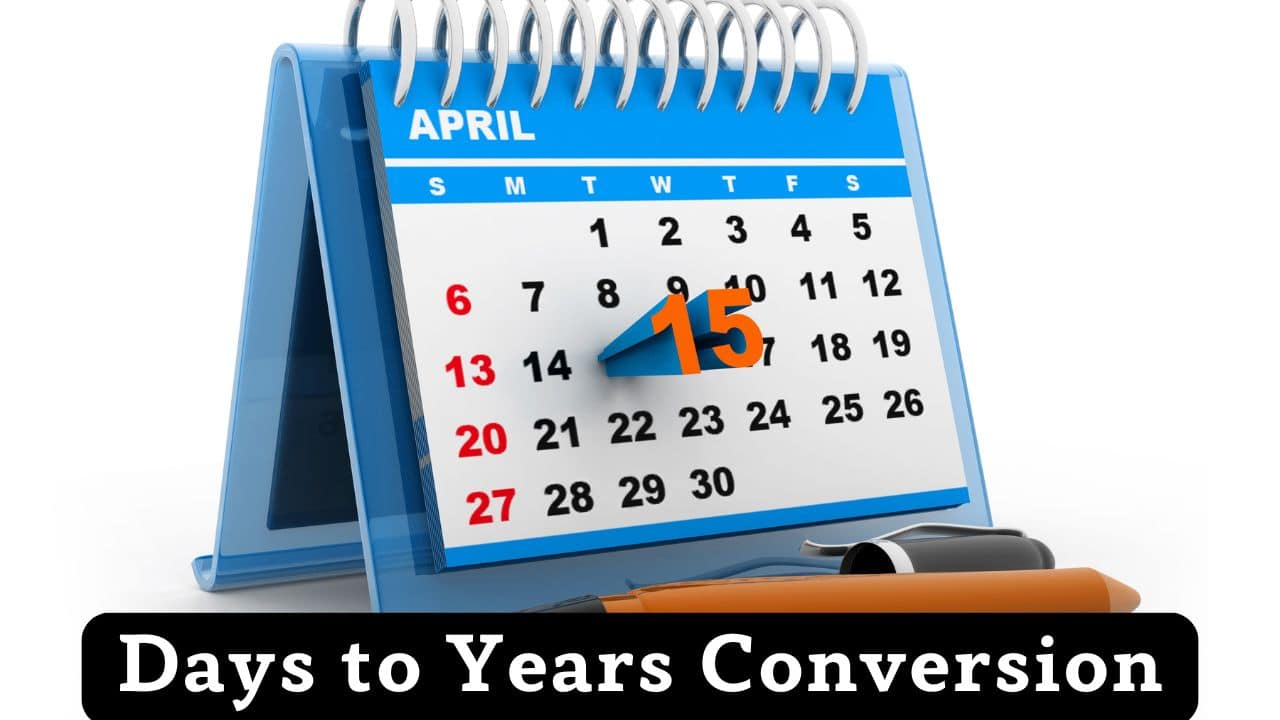Days to Years Calculator
Precise time conversion with detailed breakdowns, quick presets, and educational insights

How Many Days in Years
There are approximately 365.25 days in a year, accounting for leap years. A standard year has 365 days, while a leap year has 366 days. Converting between days and years requires understanding these variations for accurate calculations.
The Conversion Formula
Years = Days ÷ 365.25
Days = Years × 365.25
The 365.25 factor accounts for leap years, which occur every 4 years (with some exceptions). This provides the most accurate average conversion.
Example: 1000 days ÷ 365.25 = 2.738 years, or 5 years × 365.25 = 1,826.25 days
Calendar Relationships
Understanding calendar relationships:
1 Year = 365.25 Days (average) = 52.18 Weeks = 12 Months
Leap Year = 366 Days
Standard Year = 365 Days
The Gregorian calendar system accounts for Earth’s orbital period around the sun
Quick Reference Table: Days to Years
| Days | Years | Weeks | Common Usage |
|---|---|---|---|
| 1 | 0.003 | 0.14 | One day |
| 30 | 0.082 | 4.29 | One month (approx) |
| 365 | 1.000 | 52.14 | Standard year |
| 366 | 1.002 | 52.29 | Leap year |
| 1,000 | 2.738 | 142.86 | Millennium milestone |
| 3,652 | 10.000 | 521.71 | One decade |
Frequently Asked Questions
Why do we use 365.25 days per year?
We use 365.25 days per year because it accounts for leap years. Every 4 years, we add an extra day (February 29th) to keep our calendar aligned with Earth’s orbit around the sun, which takes approximately 365.25 days.
What about leap year exceptions?
While most years divisible by 4 are leap years, century years (like 1900) are not leap years unless they’re divisible by 400 (like 2000). This fine-tuning keeps our calendar accurate over centuries.
How accurate are these conversions?
Using 365.25 days per year provides very accurate conversions for most purposes. For extremely precise calculations over long periods, astronomers use 365.2422 days (the tropical year), but 365.25 is sufficient for everyday use.
When would you need days-to-years conversion?
This conversion is useful for age calculations, project planning, historical research, scientific studies, financial planning, and understanding time spans in a more relatable format.
Interesting Time Facts
Life Perspective: The average human lifespan of 80 years equals approximately 29,220 days. This puts daily activities into perspective when viewed against our total time on Earth.
Historical Context: The Great Wall of China took over 2,000 years to build, spanning roughly 730,000 days across multiple dynasties and generations of workers.
Natural Cycles: Many animals and plants have evolved biological clocks that correspond to Earth’s 365.25-day orbital period, demonstrating the fundamental importance of this time cycle in nature.
Understanding the relationship between days and years helps us appreciate both the brevity of individual days and the significance of longer time periods in human experience.
